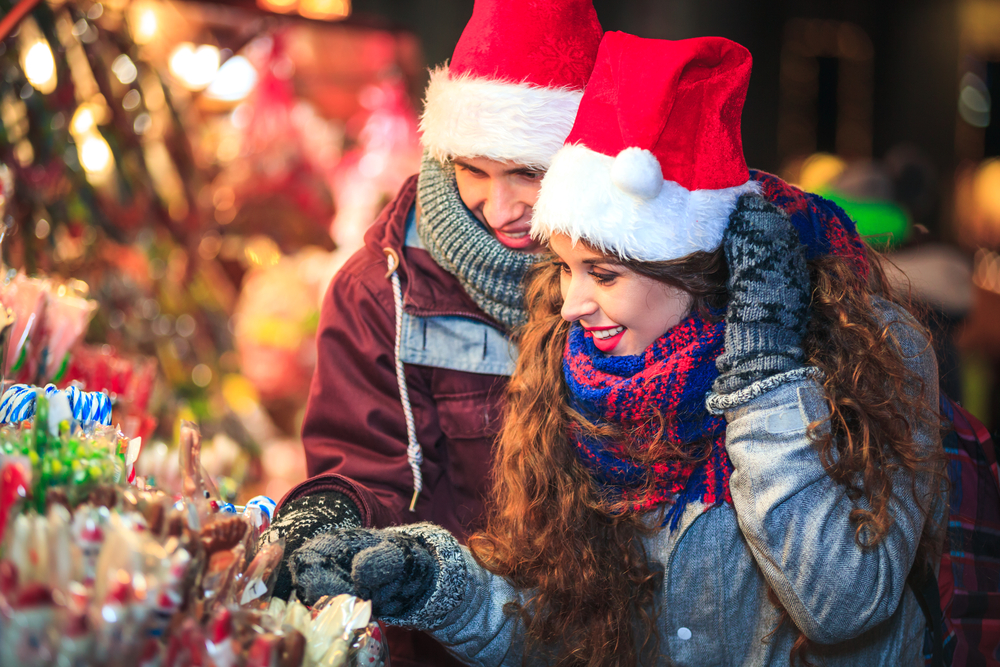These Christmas markets are not only a celebration of the holidays, but also of German culture and tradition, offering visitors from all over the world an unforgettable experience.
December and the Christmas period is a time of magic and wonder, and nowhere is that feeling stronger than at the Christmas markets in Germany. These markets are a true spectacle of light, color and traditional conviviality, and attract many visitors from home and abroad every year.
In Cologne, for example, there are no fewer than six different Christmas markets, each with their own unique atmosphere and attractions. The market at the Cathedral is a highlight, with its gigantic Christmas tree and 160 stalls full of Christmas decorations and craft products. The Neumarkt offers a fairytale scene with the Engeltjesmarkt, while the market at the Rathaus, with its skating rink, is particularly popular with children.
Frankfurt, accessible via a direct ICE train from Brussels, transforms into a winter wonderland during the Christmas period. The Christmas market on the Römerberg is a romantic scene with 240 stalls, surrounded by the scent of mulled wine, roasted almonds and roasted chestnuts.
Hamburg, with its historic Altstadt, offers a surprising variety with no fewer than thirty Christmas markets, including the historic town hall market and the lively Santa Pauli market. The Speicherstadt and HafenCity have been transformed into trendy areas with restaurants, museums and hotels.
The Christmas market in Dresden, known as the Striezelmarkt, is the oldest in Germany and offers traditional attractions such as the Stollen Festival and the largest nutcracker in the world. In Düsseldorf and Erfurt, visitors will find Christmas markets spread across different locations, each with its own theme, while the Leipzig Christmas Market in Leipzig is known for its large Advent calendar and Finnish village.
The Oberhausen Christmas Market is a unique destination for Christmas market lovers. This market, located near the CentrO shopping center, offers an authentic Christmas atmosphere with more than 150 stalls, all set up in an attractive setting with wooden houses. Interestingly, Oberhausen actually has three different Christmas markets: the Bergkerstmarkt, Santa's Village and the Gnome Market, each with their own unique theme and attraction.
De Christmas market in Duisburg offers an authentic German Christmas experience. The Christmas market in Duisburg is characterized by dozens of attractively decorated stalls selling Christmas decorations, items, carved wooden toys and traditionally made handicrafts.
Nuremberg's Christkindlesmarkt, one of the most famous in the world, offers a charming experience with picturesque wooden stalls and traditional carousels. In Berlin, often called the capital of Christmas markets, you will find a wide variety of markets, including those at Charlottenburg Castle and the Kaiser Wilhelm Memorial Church.
In cities such as Trier and Stuttgart, the Christmas markets are embedded in the historic architecture, while Lübeck, the 'Christmas City of the North', and Rothenburg ob der Tauber, with its Reiterlesmarkt, welcome visitors to a fairytale setting. Essen and Duisburg also offer unique Christmas experiences, with a wide range of stalls and activities, from ice skating rinks to concerts.

The Christmas markets in Germany offer not only a visual spectacle, but also a tasteful experience. From steaming mulled wine to roasted almonds, the smells and flavors are as diverse and rich as the markets themselves. Each market has its own specialties, whether local delicacies or international treats.
De Aachen Christmas market, which is celebrating its 50th edition this year, is one of the most atmospheric and traditional Christmas markets in Germany. This market, which takes place from December 23, 2023, transforms the squares and alleys around Aachen Cathedral and the town hall into an enchanting Christmas village. This Christmas market is popular among Dutch visitors for its authentic and traditional atmosphere, which is seen as a pleasant contrast to the Christmas markets in Maastricht and Valkenburg.
In Hamburg, the thirty Christmas markets offer a huge variety, from the historic market at the town hall to the lively Santa Pauli market. The Speicherstadt and HafenCity, with their industrial charm, are modern highlights.
Dresden's Striezelmarkt is known for its authentic Saxon atmosphere and crafts, with highlights including the Stollen Festival and the largest nutcracker in the world. Düsseldorf and Erfurt each offer a unique experience with their themed markets, from traditional German to Scandinavian inspired.
Leipzig's Weihnachtsmarkt, with its large Advent calendar and Scandinavian village, offers a mix of German and Finnish traditions. Nuremberg's Christkindlesmarkt, with its old-fashioned carousels and wooden stalls, is a timeless experience. Lübeck and Rothenburg ob der Tauber invite visitors into their medieval atmosphere, while Essen and Duisburg distinguish themselves with their great diversity and unique attractions, such as a Ferris wheel and ice skating rinks.
Berlin, as the unofficial 'capital' of Christmas markets, offers a wide range of markets, from the historic atmosphere at Charlottenburg Castle to the trendy markets in urban centers. Trier and Stuttgart combine the charm of their historic settings with an extensive range of Christmas activities and products.



